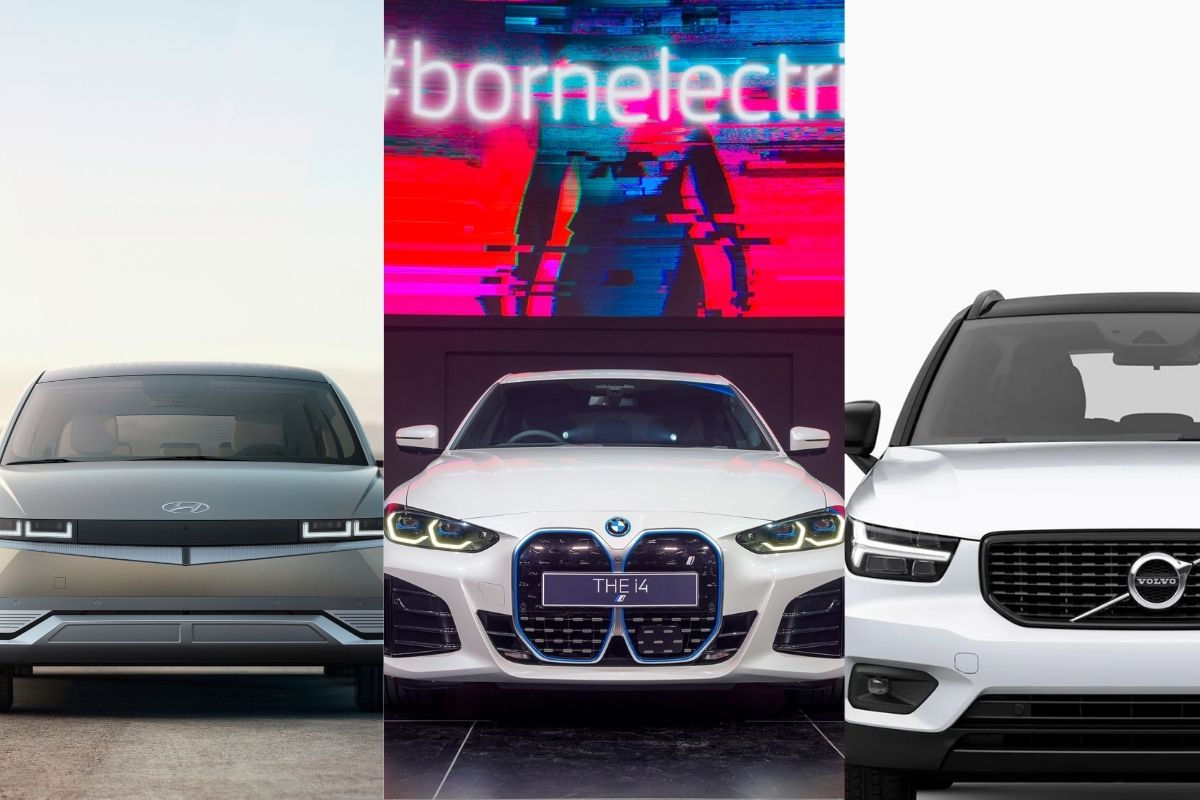The number of available electric vehicles (EV) in Malaysia is slowly starting to rise as carmakers are beginning to electrify their vehicle line-up. Though the EV charging infrastructure here is still premature, it hasn’t stopped early adopters from purchasing one. If you’re looking to go down the EV path but are not caught up with the selection of EVs available in Malaysia, we have taken the liberty of curating a list of all EVs available for purchase right now.
Tax exemptions for EVs in Malaysia
To give you an overview of the situation, the Malaysian government has exempted EVs from import and excise duties, sales, and road tax. However, the tax exemption duration varies for locally assembled (CKD) and full imported (CBU) EVs. CKD EVs will have a 100% tax exemption until the end of 2025. Meanwhile, CBU EVs are currently enjoying a 50% sales tax exemption, which will end on the 30th of June 2022. As for import and excise duties, they will be exempted up until the end of 2023 while road tax will be free until the end of 2025.
If you’re curious to know how the road transport department (JPJ) calculates road tax for EVs, you can find out here.
Here’s how we compiled the EV list
There are a total of 15 EV models on sale in Malaysia, not including their respective variants from a wide variety of price ranges. The EVs will be placed in three separate tiers according to the price of the highest-spec variant. Tier I will include EVs priced above RM300K while Tier II will be occupied by EVs priced between RM200K to RM299K. Finally, Tier III will be for EVs priced under RM200K. The price used is on the road without insurance.
Tesla vehicles imported by PEKEMA will also be included in this list. Even though they are grey imports, the cars do enjoy the sales tax exemption for CBU EVs. I choose PEKEMA because of the after-sales support and service they provide, including technicians trained by Tesla Singapore, software workarounds, and warranty claims from the country of origin.
You may or may not need this after-sales support given that Tesla vehicles are infamous for their poor build quality. Tesla CEO Elon Musk himself has admitted that the current manufacturing process has a tendency to produce defects in the final product. Cars.com evaluated the build quality of their own Model Y and found multiple defects ranging from cosmetic to potentially affecting the functionality of the vehicle. Even the flagship Model S, which was introduced back in 2012 still is prone to manufacturing defects today.
Apart from standard figures like horsepower (hp) and torque, I will also be calculating the price to performance figure (RM/hp) of the EVs on this list and will be comparing the horsepower output of the EV to a similar internal combustion engine (ICE) vehicle. Note that this comparison is purely based on horsepower output and does not take into consideration performance or class segment. For standard AC charging, the time shown is for the battery to get from 0 to 100% state of charge (SOC), while fast DC charging will be based on 0 to 80% SOC.
Lastly, the vehicle shown in the images is based on an international model and will differ from the Malaysian specification.
We tell you our EV of choice
At the end of each Tier category, there will be an Editors’ Choice section for EVs chosen by SoyaCincau editors you’ve seen covering, discussing and reviewing automotive content. So that would be Amin and Alex who have been discussing extensively about EVs on their LTA show, Rory who is the resident automotive reviewer here at SoyaCincau, and finally myself.
With that out of the way, here is the SoyaCincau EV Buyer’s Guide – May 2022 Edition
Tier I – Above RM300,000
BMW iX
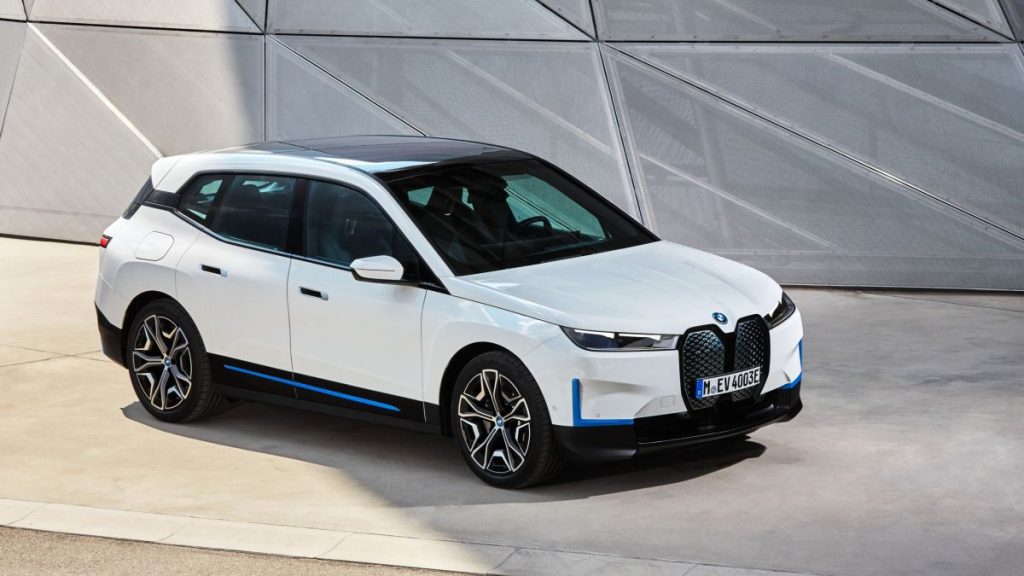

The iX is BMW’s first electric crossover and the second BMW built on a dedicated EV platform since the BMW i3 that was first launched back in 2013. Just like how the i3 had a district interior design compared to its ICE cousins, the iX debuts with BMW’s all-new interior and dashboard layout. Both the instrument panel and infotainment are now integrated into a single curved screen while the steering wheel has a hexagonal shape.


What the iX offers is an SUV that is quiet, comfortable and easy to drive, making for a good day-to-day vehicle. Moreover, it has a distinct exterior design that won’t be mistaken for any other BMW SUVs, so if you want to stand out among your BMW peers, the iX is definitely the way to go. However, being weighed down by the heavy battery and the fact that it’s an SUV, you do compromise on driving dynamics, so it might not be as enjoyable to drive as a BMW should be.

BMW iX3


The BMW iX3 is essentially an electrified version of the BMW X3, which is a compact crossover. We get a single power option with two variants – M Sport Impressive and M Sport Inspiring. Both variants are priced within a stone’s throw of the BMW X3 xDrive30i and xDrive20i respectively, so your choice will depend on if you want to stick with petrol or try your hand at electric power.
One good thing about being based on an ICE vehicle is that you get a conventional-looking car which can easily blend in with the crowd if that’s your thing. Despite using a platform designed for an ICE, BMW engineers still managed to get 510L of boot capacity in the iX3, which is just 40L less than that of the X3 at 550L. Therefore, you’re not making that big of a compromise by going electric.


As for the cabin, the iX3 gets the same dashboard layout as the X3 which is good since it provides returning customers with a system they are familiar with. On the flip side, you will be buying a vehicle with an outdated design language when compared to the iX and i4.

BMW i4


The BMW i4 is a sports saloon based on the BMW 4 series and comes in the eDrive40 M Sport trim. This is essentially BMW’s EV to entice buyers who are looking for a sporty and enjoyable driving experience.
As such, the BMW i4 eDrive40 M Sport can accelerate from 0 to 100km/h in 5.7 seconds in complete silence. Coupled with the instantaneous acceleration that an electric drivetrain provides, the car will feel faster than its on-paper specs would suggest. The downside is that when you take the car around the bend, you will feel the mass of the batteries though BMW has tuned the i4 to handle the extra weight.


The BMW i4 also has a different interior compared to the BMW 4 series despite being the same model year. The i4’s interior leans towards futuristic and incorporates BMW’s new dashboard design with a single curved display incorporating both the instrument cluster and infotainment system.

Porsche Taycan


The Porsche Taycan is a sports saloon that in Porsche’s lineup, looks to replace the Porsche Panamera soon. So yes, this isn’t an electric sports car like the Porsche 911 series but that would have upset a lot of people. Instead, the Taycan offers four seats for your small family and a whole heap of performance if you spec your car right. As with all Porsches, there is a large list of customisation options available and if you’re not careful, you could end up spending a lot of money, but then again, if you’re looking to buy a brand new Porsche, money should not be an issue.


Despite lugging a heavy battery pack, the Taycan retains almost all of Porsche’s adored driving characteristics. Moreover, you also get Porsche’s high build quality and luxury touches with the Taycan, so you’re getting your money’s worth. As for downsides, if you wanted to take Taycan to Sepang for a track day, you might spend more time waiting for the car to recharge than actually driving it around the track.

Porsche Taycan Cross Turismo


The Porsche Taycan Cross Turismo is basically the more rugged version of the Porsche Taycan. It comes with body cladding and raised ride height, allowing you to do some light off-roading. Moreover, the Taycan Cross Turismo comes in a wagon body which means that you get extra cargo capacity compared to the Taycan. Apart from those differences, it shares a lot in common with the Taycan including all its strengths and weaknesses. So, the buying decision boils down to your styling preference – whether you like the sleek saloon look of the Taycan or the rugged, jacked-up look of the Taycan Cross Turismo.
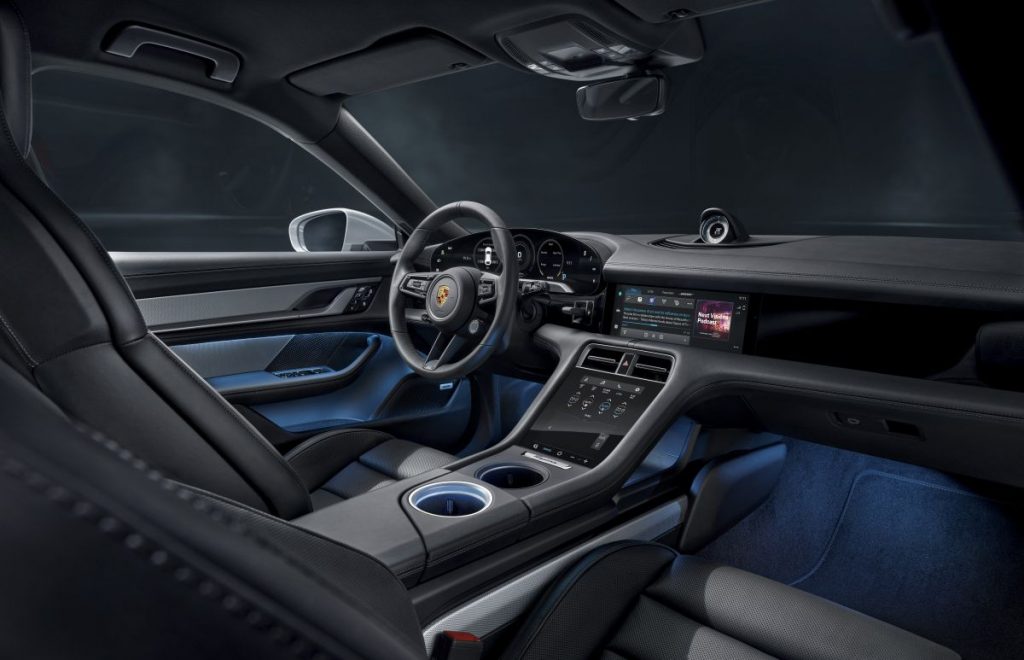


Tesla Model 3


The Model 3 is the cheapest way to get a Tesla badge. Being a mid-sized sedan, its compact nature will make it easy to drive in bustling city streets, where EVs are at their most economical. There is also the cool factor associated with owning and driving a Tesla. Being one of the pioneers in the EV space, Tesla knows a thing or two about making high tech and efficient EVs and the Model 3 is the best example. It provides good performance, great range and a whole heap of tech.

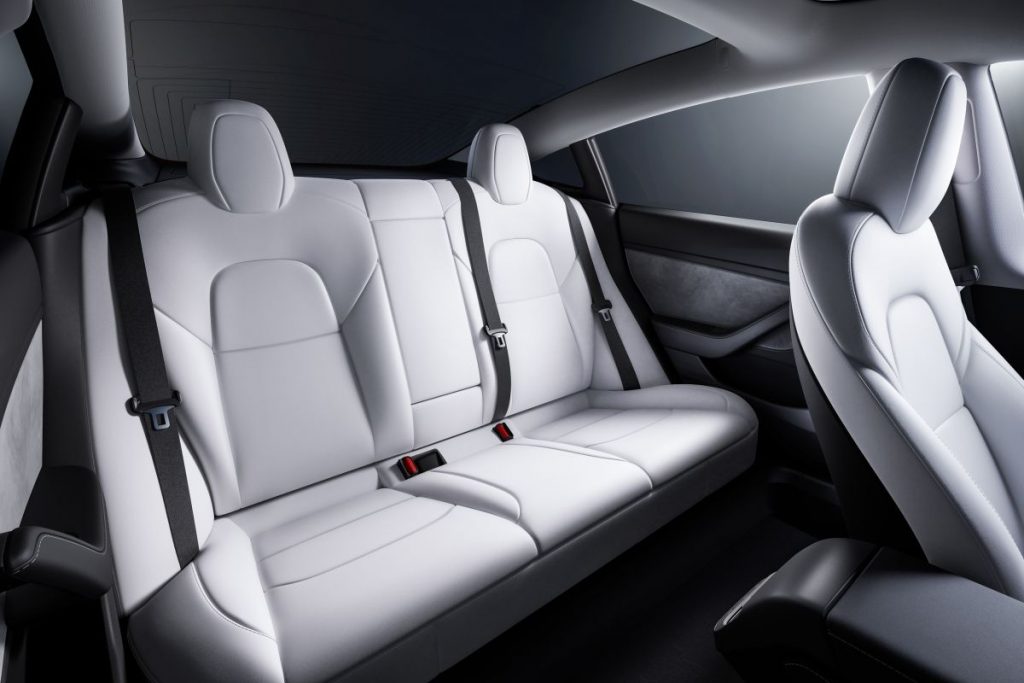
That said, Tesla has known to provide, let’s say forward-thinking user interface. The Model 3 features a single, centre mounted display which doubles as the infotainment and the instrument cluster. Moreover, most of the car’s functions and features need to be accessed via the display, like opening the glove box or changing the windshield wiper speed. So there is quite a steep learning curve, especially for those who are tech-illiterate.

Tesla Model Y


In a nutshell, the Tesla Model Y is basically a higher riding Tesla Model 3. Being a crossover, the Model Y has more headroom and cargo space compared to the Model 3. The major differences end there because otherwise, both models share the same quirks and features. So if you have a small family and are outgoing, the Model Y might suit your lifestyle better.



Tesla Model S

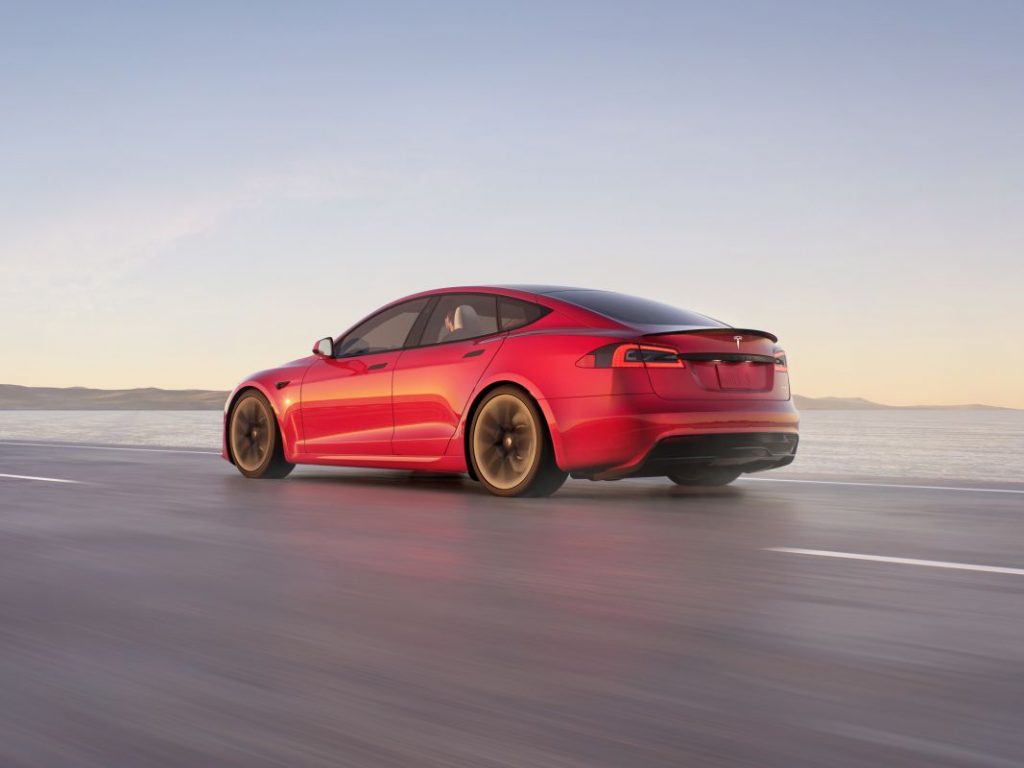
Sitting at the top of Tesla’s food chain is the Tesla Model S, which comes in the form of a sedan and sports sedan. Arguably, the Tesla Model S is the reason for all the EV craze you’re witnessing right now. The performance variant of the Model S was generally known as a supercar killer and still is with the latest version. It boasts a 0-100km/h time of just 2.5 seconds which is something you need to experience to understand how fast that truly is. On the inside, you get a more conventional layout with an instrument cluster in front of the driver and a larger, vertically aligned infotainment system. There is also no shortage of tech with the Model S like with all Tesla vehicles.


Although the Tesla Model S costs a premium, its interior does not feel luxurious like the Porsche Taycan. What you get instead is a simple and minimalist interior with a dashboard design that plays it safe. So depending on your definition of luxury, the interior of the Tesla Model S may or may not impress you.

Tesla Model X


Tesla’s flagship SUV is the Model X, which is basically a jacked-up Model S. One of the Model X’s party tricks is its Falcon wing rear doors which open upwards. This creates an obstruction-free entry to the rear seats, but more than that, the design choice just oozes coolness and is a showcase of Tesla’s technological capabilities. Therefore, those doors alone might be a reason to justify the higher price point of the Model X compared to the Model S.


Despite being an SUV, it is one of the most performance capable SUVs on the market today with a 0-100km/h time of under 3 seconds. It is one of those vehicles where you don’t need to choose between the space of an SUV and other performance of a saloon. Elsewhere, it shares all the specs and features of the Model S including its simple and minimalist interior design.

Editors’ Choice – Tier I
Amin
If money is no object, my choice will be the Porsche Taycan Cross Turismo. It has the range, tech, pace and space that I look for in a battery electric vehicle (BEV). It has a high top speed, good range and the EV supports both the 800V and 400V charging infrastructure, which is better. All this is packaged in the driving dynamics and quality, you expect in a Porsche. Relatively speaking, it’s priced competitively in its market segment, I would go as far to say that it is the best value in this segment.
Alex
I have to choose a BMW, specifically the BMW iX because it is the most futuristic-looking crossover on sale in Malaysia at the moment. So for around the same money you would typically spend on a familiar-looking BMW X5 xDrive45e plug-in hybrid, you could be driving something many people have yet to see.
Rory
Having not driven any of these, I’m going mostly off looks and desirability. The Teslas are all out for me, not currently a fan of the big single screen for interfacing with everything. My heart probably says the Porsche Taycan. In Malaysia though, if I don’t wanna lose my mind with charging, logic dictates the i4. Not a fan of crossovers. But the heart wants what the heart wants.
Duke
This was a tough decision mainly because none of the cars in this category managed to capture my heart. That said, despite being a die-hard BMW fan, I would have to agree with Rory’s heart and choose the Porsche Taycan. It just feels the most special with a beautifully crafted interior, a clean and minimalist exterior, and ample power. Furthermore, being a Porsche, you can expect it to provide an enjoyable driving experience.
Tier II – RM200,000 to RM300,000
Hyundai Ioniq 5


The Ioniq 5 is the first EV built on Hyundai’s E-GMP for electrified vehicles and comes in the form of a hatchback. Hyundai took a big risk with the Ioniq 5, designing it like no other modern vehicle on the road today, with angular lines and a boxy design. Well, that risk paid off big-time as it was a huge hit among consumers and car enthusiasts. Hyundai artfully blended a retro-looking, 8-bit inspired exterior design with a modern and contemporary interior. It’s no wonder then it won the 2022 World Car of the Year, 2022 World Car Design of the Year and is the first EV to win the 2022 World Electric Vehicle of the Year.
Hyundai has also put in a lot of thought when creating the Ioniq 5 with features like vehicle to load (V2L) which allows you to use the Ioniq 5 like a giant power bank to power external electrical appliances. Inside, you get a lot of space as the wheelbase is longer than that of the Toyota Camry and Mercedes-Benz E Class.


The only thing that works against the Ioniq 5 is the brand identity. Majority of consumers in Malaysia view Hyundai as a budget automaker, so asking to fork up RM200K to RM260K for the Hyundai badge might deter a lot of people.
You can read our full coverage of the Malaysian launch for more details.

Mercedes-Benz EQA


The EQA is the first EV offering in Malaysia by Mercedes-Benz and is based on the petrol-powered Mercedes-Benz GLA crossover. The exterior is distinct from that of the GLA, but the interior is for the most part identical to the GLA. This means that current Mercedes-Benz owners will have an easier time acclimating to the electric EQA. They will be greeted by the familiar Mercedes-Benz premium features and furnishing.
That said, it is the weakest showing of an EV in this tier, no thanks to being built on a dedicated ICE platform. The EQA 250 has a relatively small battery and low power output given its price tag and while its rivals offer AWD at this price, the EQA 250 just settles for FWD. It also makes a big compromise in boot capacity where it gets 340L which is 105L less compared to its ICE sibling at 445L


In my opinion, it also has the least attractive design among its competition with that droopy-looking fascia. Unless you really need the Mercedes-Benz star, I would suggest skipping this generation of the EQA.
You can read our full coverage of the Malaysian launch for more details.

Volvo XC40 Recharge Pure Electric
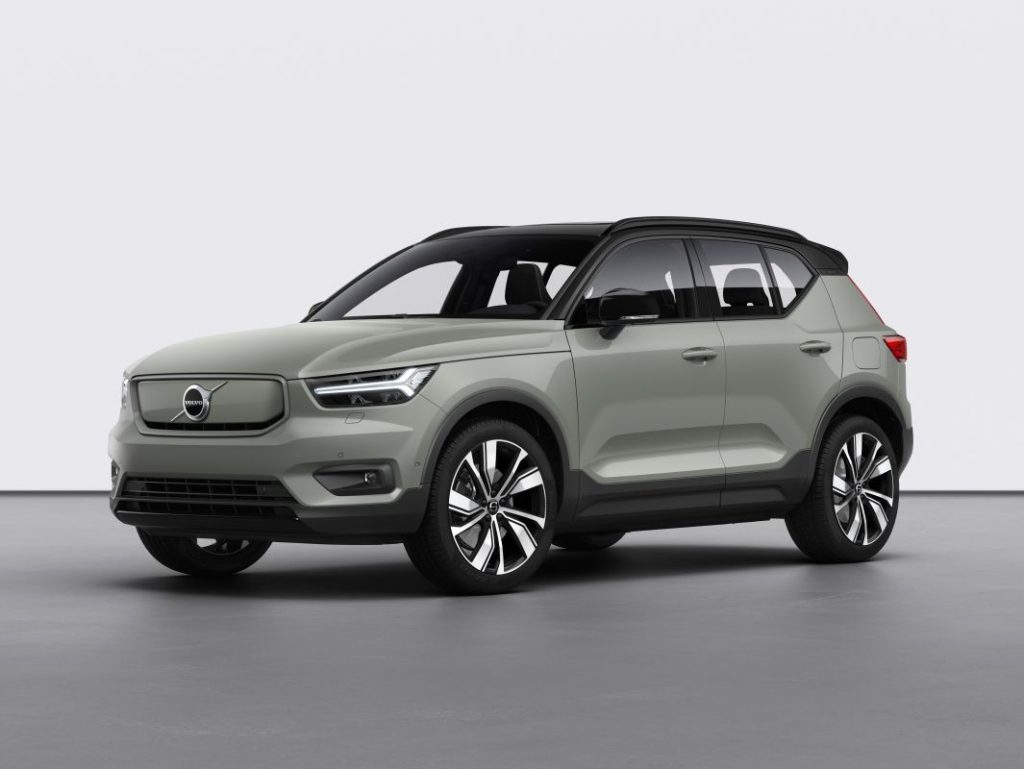

Volvo’s XC40 Recharge Pure Electric is the Swedish automaker’s first all-electric crossover and Malaysia’s first CKD EV. Being built on Volvo’s Compact Modular Architecture to accommodate both ICE and electric powertrain, this compact crossover offers the best mix of features, performance and practicality for the price.
Powering the infotainment system is Android Automotive OS, which means that you no longer need to hook up your phone to run Android Auto. Just sign in with your Google account and all your data will be synced to the infotainment system. As for performance, the XC40 Recharge Pure Electric is the most powerful in this segment and provides the most horsepower for the money on this list at RM653/hp. Additionally, it makes use of the available space well to give you things like a storage space under the front hood, two powerful electric motors driving all four wheels and a big battery capacity.


It’s quite hard to find a fault with this EV, but if I had to identify a downside, the shared platform means that there is less cabin space compared to if it was built on a dedicated EV platform like the Hyundai Ioniq 5.
You can read our full coverage of the Malaysian launch for more details.

Editors’ Choice – Tier II
Amin
The choice here is obvious, it has to be the 2022 World Car of the Year – the Hyundai Ioniq 5. It is, quite literally, the best electric car you can get right now. It’s fast, fun, innovative and well thought out. To top it all, nothing on the road looks as cool as the Ioniq 5 and it’s priced reasonably too. From the looks to the performance and the features, I like everything about the Ioniq 5.
Alex
The Hyundai Ioniq 5 is probably the best EV in its class and is designed from the ground up on a dedicated EV platform. The best part is that nothing on the road today looks like the Ioniq 5 and it has a refreshing interior with loads of space.
Rory
Oh this one’s easy. Having been in all of these cars, the Hyundai Ioniq 5 is the most interesting by far. Not the best built, I don’t think. Nor does it have the nicest finish in the interior (that display bezel should be a war crime). But, in terms of function and a glimpse into the potential future of electric cars, this has it by a country mile.
Duke
Not to sound like a broken record here but it’s the Hyundai Ioniq 5 for me as well. The retro, 8-bit game inspired exterior looks like it travelled from the past to the future which makes nothing on the road look as cool as the Ioniq 5. But when you step into the cabin, you will be greeted with a modern and minimalist cabin that is also very spacious thanks to the dedicated E-GMP EV platform it’s built on. Moreover, the V2L feature means that looking for a power socket to recharger my dying laptop while on the move is a thing of the past.
Tier III – Below RM200,000
Mini Cooper
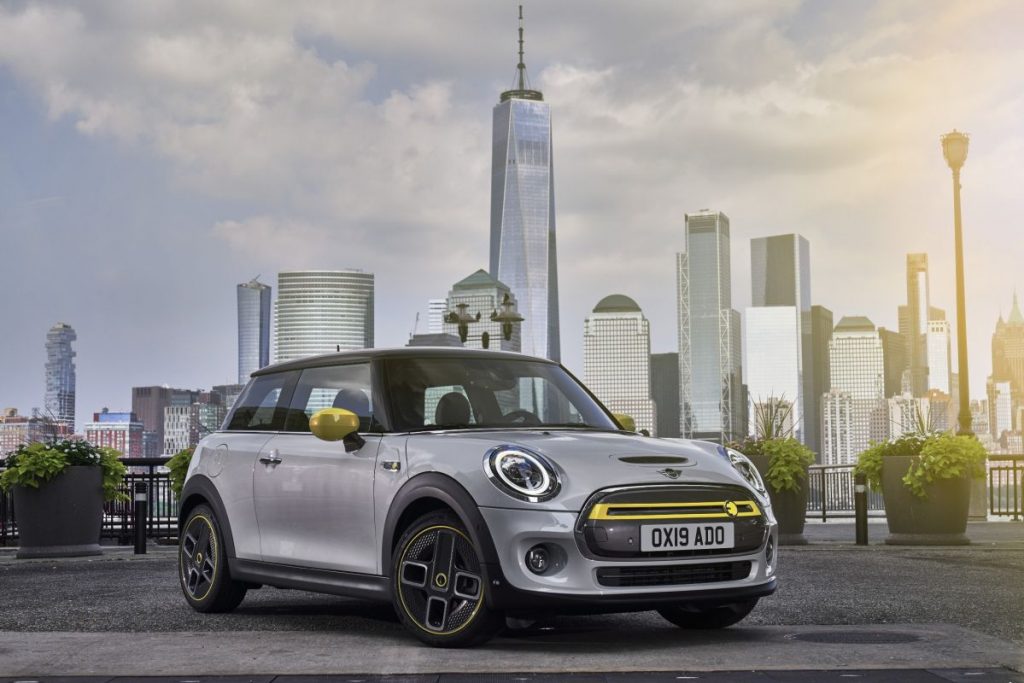
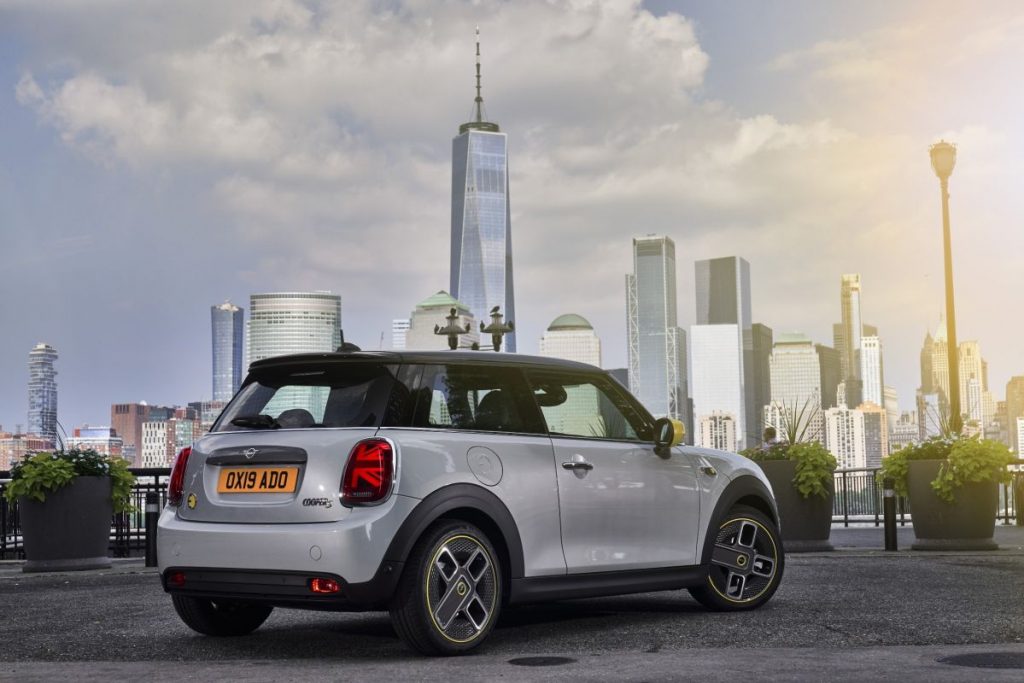
The Mini Cooper has been around for decades and now it gets the electric treatment. The Mini Cooper SE 3 Door is arguable an excellent city car thanks to its compact form factor, making it easy to navigate and park in the city. Even its relatively short range of just 232km reinforces the idea of it being purely an EV for the city, so if you work and live in the city, this will be the perfect fit for your daily commute.


On the other hand, because of its range, I would recommend buying the Mini Cooper SE as a second car. Moreover. it also comes with all the downsides of being such a compact car like a small cabin and boot space.
You can read our full coverage of the Malaysian launch for more details.

Hyundai Kona Electric

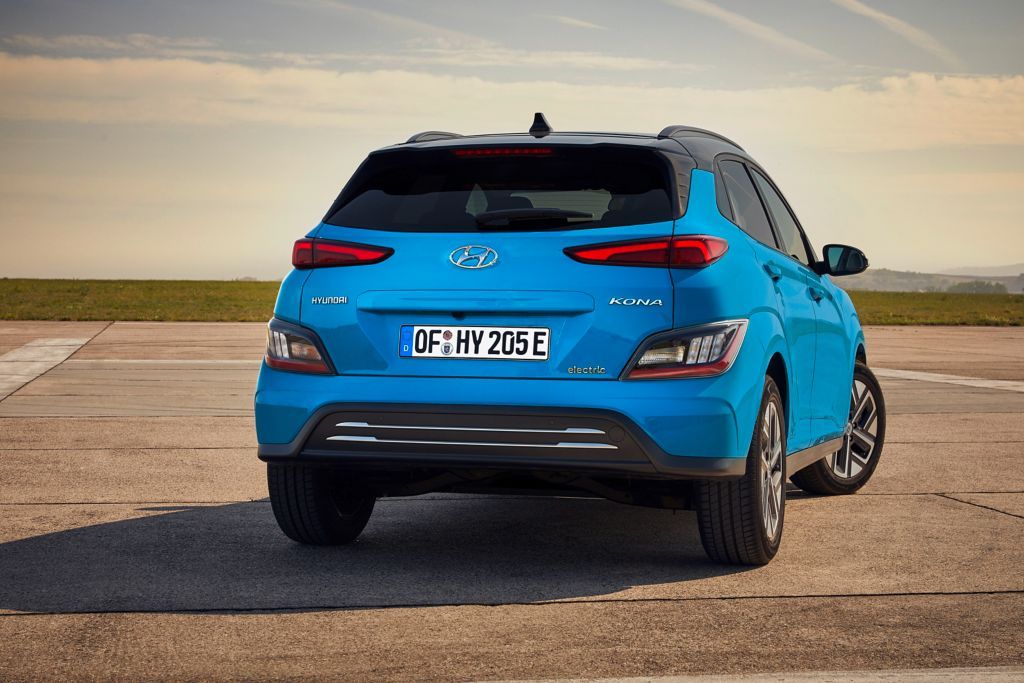
The Hyundai Kona Electric is a crossover that shares its platform with the standard petrol-powered Kona. However, Hyundai has engineered the platform to accommodate both ICE and electric powertrain but at a slight disadvantage to the latter. A good example will be the boot space where the Kona Electric has 332L which is 42L less than its ICE counterpart at 374L. Since the Kona is a compact vehicle, the loss of cargo volume will be more noticeable.
As of writing, the Kona Electric is also the cheapest EV you can buy in Malaysia, well the base model at least. For anyone looking to get a taste of the electric drivetrain without breaking the bank, the Kona Electric Lite is your best option at RM149,888. However, being the base model, you will lose out on a lot of features and will have to settle for just 134hp.
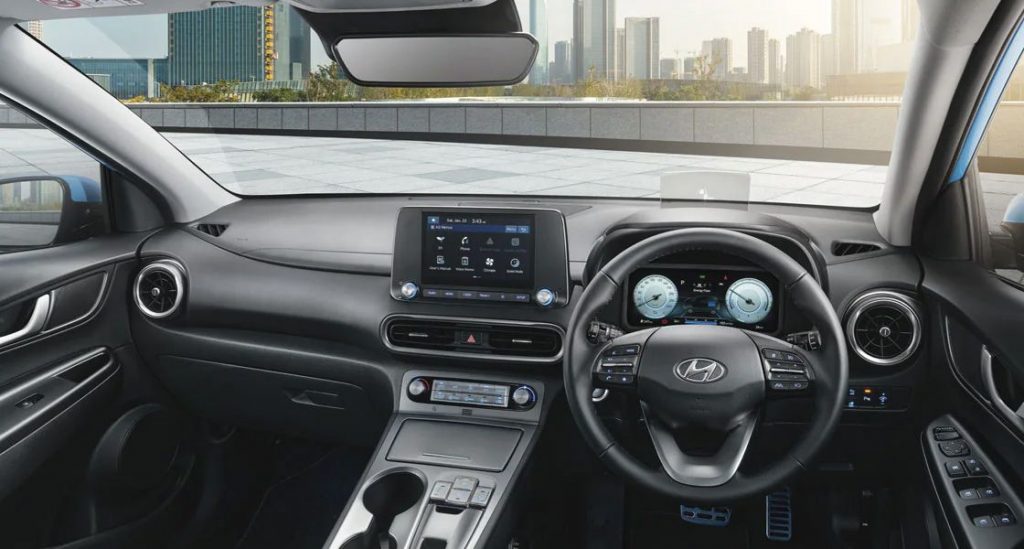

To get all the bells and whistles, you’ll be looking to spend close to RM200K. That is the same price as the Hyundai Ioniq 5 Lite, which despite being a base model, still has the looks going for it.

Nissan Leaf


The Nissan Leaf was one of the first EVs to be available for sale in Malaysia, and the second-generation Leaf improves a lot over its predecessor. It’s a hatchback that offers great styling, a practical interior and usable power for everyday use. There is also something called e-Pedal which will apply the brakes when you lift off the accelerator. This means that you could drive the car with just one pedal, making for a more seamless driving experience. A bonus point to Nissan for including the home wall box charger with the purchase of the Leaf though you need to pay for the installation yourself.
That’s all good, but if you take into consideration that the Leaf was launched in 2019, you can notice that it hasn’t aged that well in some aspects. The exterior design still looks modern, but the interior tech and features are just dated. The infotainment system does not support Apple Carplay or Android Auto and the overall design of the dashboard is outdated. As for the charging speeds, you get a maximum of 6.6kW AC for home charging which takes seven hours to charge its relatively small 40kWh battery which makes it the slowest on this list.


However, you can get the Nissan Leaf on a subscription for up to 36 months from GoCar if you want to try it out. You can opt for RM2,499/month on a 24-month contract or RM2,299/month on a 36-month duration with both options including a 6.6kW AC wall box home charger.

Editors’ Choice – Tier III
Amin
For this category, it’s a toss-up between the Hyundai Kona Electric and the Mini Cooper SE. On one hand, you get the iconic Mini design combined with its fun-to-drive nature. On the other, you get the sensible Kona with better range, better performance and more features. The heart wants the Mini but the brain is saying Kona Electric. I’ll take the Kona Electric simply on the merit that it can go farther.
Alex
I’ll go for the Hyundai Kona Electric because it is the most powerful and well-specced EV in its class for under RM200K. On top of that, the Max variant still manages to return 484km of range, which is considerably more than its rivals and slightly more than its bigger brother, the Ioniq 5 Max.
Rory
Can I choose neither? While the Hyundai Kona Electric has the range that would make living with it easy, it’s not a desirable car. The Mini Cooper SE looks like a funky Mini EV should, but having never driven it I can’t speak for the experience. And with less than 300km of range, it seems like a disaster. And the Leaf, well, carmakers would have to try to make something less desirable. I guess I could live with a Kona eMax if it was in blue…
Duke
Between these three EVs, I would, without hesitation, choose the Mini Cooper SE! Being a Mini, it brings a touch of personality that is lacking in the others. Touches like its yellow accents, Union Jack LED brake lights, round infotainment system (though the actual display is rectangular) and instrument panel just gives it a quirky character. It’s definitely one of those cars you look forward to driving every day. Additionally, the Mini Cooper SE is the cheapest way to own a Mini, so that’s just a bonus point.
Comparison Table

Upcoming EVs to look out for
The selection of EVs in Malaysia just doesn’t stop there! Here is the list of EVs that have been either confirmed or rumoured for our local market.
- Volvo C40 Recharge Pure Electric
- BMW iX xDrive50 Sport
- BMW i7
- Jaguar i-PACE
- Kia EV6
- Kia Niro EV
- Mazda MX-30 Electric
- Peugeot e-2008
- Toyota bZ4X
There will be an article diving deeper into the details of these upcoming EVs coming very soon, so stay tuned for that.
Which EVs are we looking forward to?
Amin
I’m looking forward to the Kia EV6 simply because it’s based on the same underpinnings as the Hyundai Ioniq 5, which means it’s going to be a great car. It’s Kia’s interpretation of what an EV should be and I’ll have to admit, as an owner of the Kia Cerato and Kia Grand Carnival, I have a soft spot for Kia.
Alex
Anticipating the arrival of the Kia EV6, which is essentially a sportier version of the Hyundai Ioniq 5, but comes as a crossover.
Rory
Honestly, none of these are super interesting to me. The Kia EV6 maybe because it’s like another take on the Hyundai Ioniq 5? But I think probably the BMW iX xDrive50 Sport because if nothing else it just looks like an absolute bonkers vehicle. How did Jag get the design so wrong by the way?
Duke
I am personally looking forward to the Mazda MX-30 Electric because I love the sharp styling of the exterior paired with a contemporary and minimalist interior. However, the standout feature for me has to be those rear coach doors! This door design is why I was willing to overlook the undesirable looks of the BMW i3. The range of the MX-30 is a little pathetic at just shy of 200km no thanks to the relatively small 35.5kWh battery, but my daily commute is below 50km so that’s perfectly fine with me.
Now that you’ve heard from us on which EVs we are most fond of, we would like to know which one of these EVs do you see yourself owning and driving. If you’re not convinced that EVs are sustainable in Malaysia yet, let us know why in the comments section. We would love to get a conversation going!

